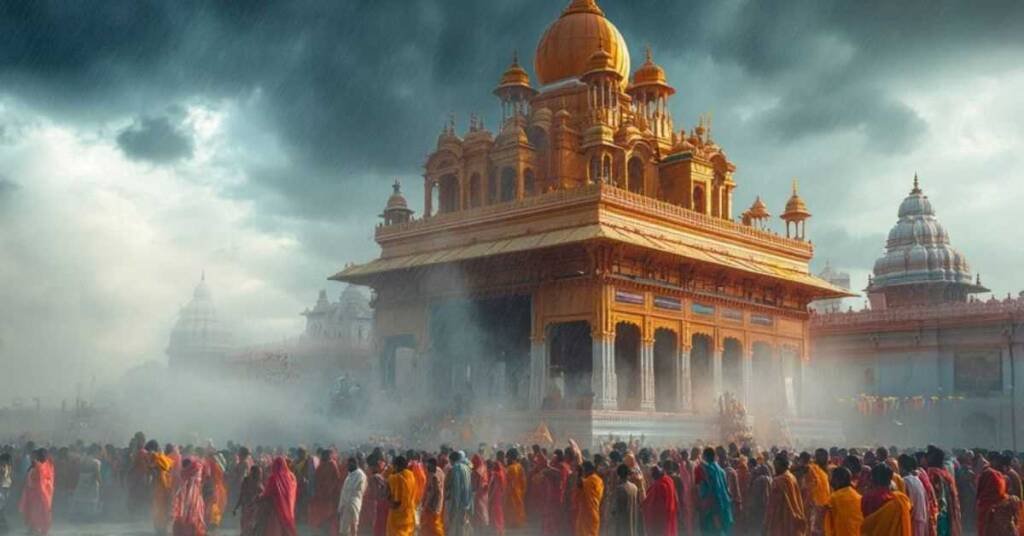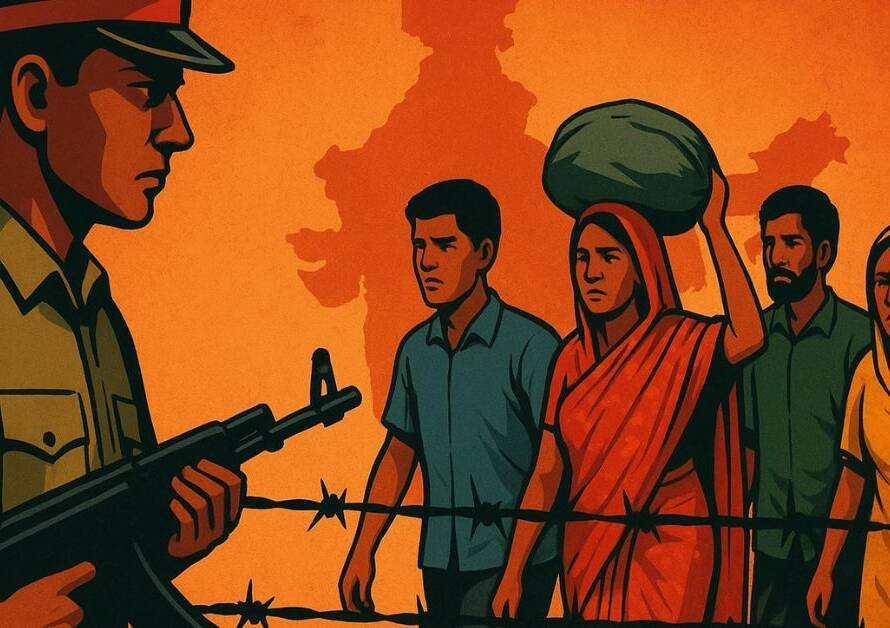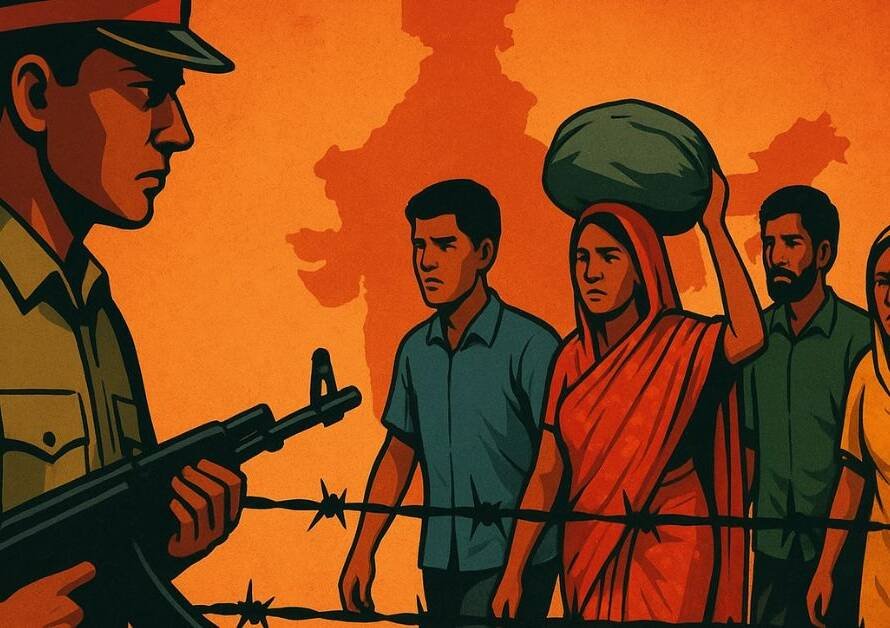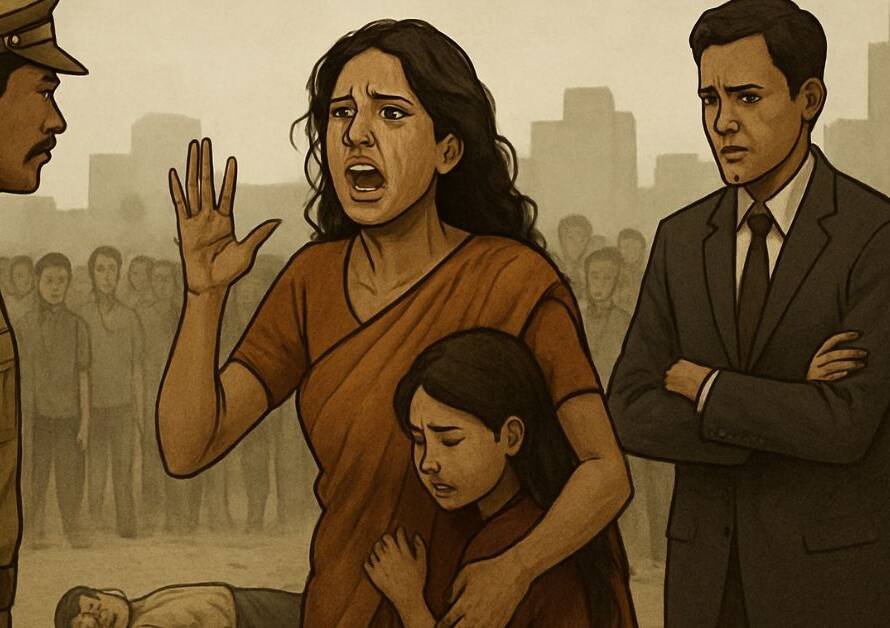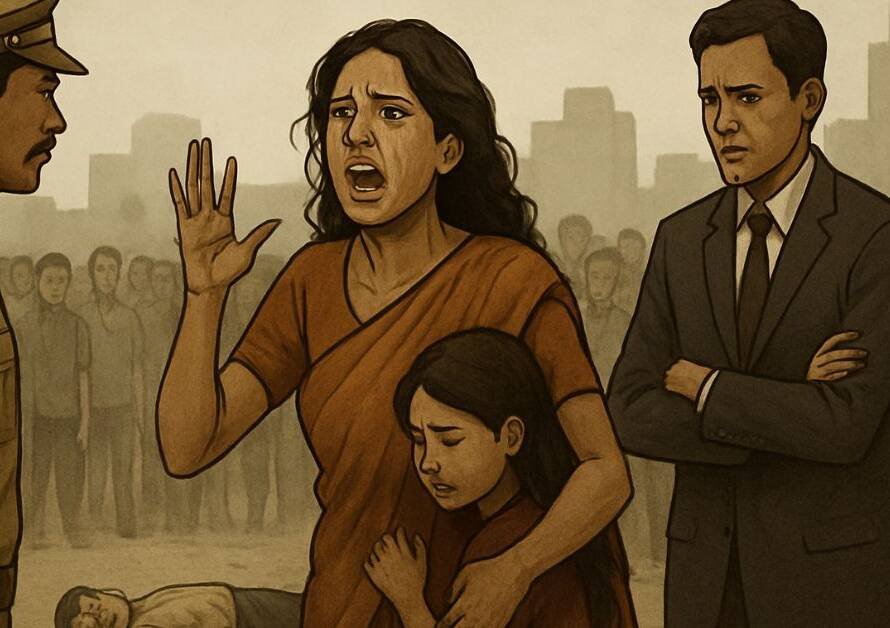I am a humble, retired citizen, deeply concerned about the current state of affairs in our country and the numerous challenges threatening our stability, economy, and global standing. The efforts of the BJP government, led by Prime Minister Modi, have brought India unprecedented global recognition and economic growth. However, these accomplishments are now at risk. I am reaching out to like-minded individuals who are equally concerned, with the hope that we can unite, share our thoughts, and find a way to strengthen our nation together. If you share these concerns, I urge you to respond so that we can connect and collectively work toward a stronger India. Though I may have ideas, I lack political and social connections and need your support to take this cause forward.
We are fighting against a strong tide of opposition from political parties, leftist groups, and so-called secularists, all of whom resist the BJP and Modi’s leadership. Their dissatisfaction stems from the reduced levels of corruption, which have, in turn, freed up public funds for development projects under Modi’s government. The growth in foreign reserves, India’s rising position as the fifth-largest global economy, and the international respect we’ve gained as the fastest-growing economy are all testaments to these efforts. Unfortunately, these achievements are not adequately publicized, as most of our media is left-leaning, anti-government, and in many cases, anti-national. There are only a few pro-government journalists, and their voices are often drowned out by the loud opposition from Congress, leftists, and secularists.
Meanwhile, anti-Hindu forces, particularly sections of the Muslim and Christian communities, continue to grow in numbers through various means. Sadly, many Hindus are distracted, self-interested, and lack an understanding of true Hinduism (Sanatan Dharma). They are misled by some religious leaders who are more focused on accumulating wealth and expanding their institutions rather than genuinely serving society. While some do engage in charitable activities, a large portion of the resources they gather is spent on building properties and maintaining their organizations, often at the expense of Seva (service).
Moreover, Hindus are fragmented along lines of caste, creed, language, and sect, which prevents us from working together for the common cause of preserving our religion and nation. Even pro-Hindu groups such as the RSS, VHP, and Bajrang Dal are divided by internal ideologies, which hinders our collective ability to protect and promote Hinduism. Many Hindus remain complacent, assuming that everything is fine, unaware of the existential threat we face. They fail to see the danger looming ahead, similar to what has happened in Afghanistan, Pakistan, and Bangladesh, where once-thriving Hindu populations have all but disappeared.
In contrast, anti-Hindu factions, including Congress, opposition parties, leftists, secularists, and some elements within Muslim and Christian communities, are working tirelessly to destabilize the BJP government. This government has revived our economy, reduced corruption, and bolstered India’s global political stature. These achievements have unsettled international superpowers, particularly the United States, which sees its own influence waning. History shows that such powers will not hesitate to undermine other nations, using any means necessary, to maintain their dominance.
We face formidable enemies, united across religions, castes, and creeds, well-supported by their religious leaders and international communities. Even fundamentalist and terrorist organizations have joined forces to weaken us. Tragically, they are aided by domestic political groups—Congress, opposition parties, and leftists—who are more concerned with regaining power than with national unity. These enemies are well-prepared for conflict. While we, Hindus, are non-violent by nature, even hesitant to harm an ant, they are far more aggressive, accustomed to slaughtering animals for food and stockpiling weapons. In any future internal conflict, we may find ourselves defenceless.
Despite being a majority, we Hindus remain divided and are doing little to address the real dangers we face. Instead, we complain about inflation, unemployment, and poverty, blaming Modi and the BJP government for problems beyond their control, rather than supporting the larger cause of Hindu survival. If we fail to support this government, and the opposition returns to power, it won’t take long for them to dismantle everything Modi has built. Our country will once again become a puppet of foreign powers, just as we’ve seen in places like Afghanistan, Ukraine, and most recently, Bangladesh.
Since independence, Congress has consistently undermined Hinduism through policies that favor Muslim appeasement and minority vote-bank politics. They have divided us based on caste, creed, and language, turning us against each other, and we have foolishly fallen for their tactics. All opposition parties have now joined forces, eager to topple Modi and return to their agenda of rampant corruption. Their goal is to weaken the country, making it easier for foreign powers to take control, all in the name of fulfilling their political ambitions.
If Modi and the BJP had not come to power to save the country from economic collapse, we would already be facing political instability, a weak economy, and a growing threat of becoming a Muslim-majority country ruled by Sharia law. Another mistake in electing our leaders will doom Hinduism, our powerful economy, and our nation’s future to the pages of history.
*It’s high time that we wake up, get united and act together to save your religion and country from being destroyed before it is too late and we and most importantly our future generations will have to suffer for ever due to our inaction and would never forgive us for providing them an unsafe future.
*Jai Hind, Jai Bharat!
Historical basis and Human Perspective of Our Concerns
In order to better understand the concerns and the call for Hindus to “Arise, Awake, and Save Yourselves and Your Country from Oblivion,” it is essential to bring in concrete examples and case studies that highlight both the historical and contemporary challenges faced by Hinduism and the nation. These examples will not only provide context but also emphasize the urgency of the situation and the need for collective action.
- The Partition of India (1947)
Historical Context: The partition of India in 1947 is a significant example of the consequences of religious and political divisions. The decision to divide India into two nations—India (with a Hindu majority) and Pakistan (with a Muslim majority)—resulted in one of the largest mass migrations in human history, where millions of Hindus, Sikhs, and Muslims were displaced. The communal violence that ensued led to the deaths of an estimated one to two million people.
Impact on Hinduism: Many Hindus and Sikhs were forced to flee their ancestral homes in what became Pakistan, particularly in regions like Punjab and Sindh. Hindu temples and properties were destroyed or seized, and the Hindu population in Pakistan, which once formed a substantial minority, rapidly dwindled. In contrast, Muslims who remained in India were protected by the Indian Constitution, which guaranteed their religious rights.
Relevance Today: The partition serves as a stark reminder of what can happen when political and religious divisions are allowed to fester. If Hindus remain divided along caste, creed, and regional lines, similar vulnerabilities could emerge, making it easier for foreign and internal forces to exploit these divisions. - The Exodus of Kashmiri Pundits (1989-1990)
Case Study: The exodus of Kashmiri Pundits from the Kashmir Valley is a contemporary example of the consequences of religious persecution against Hindus. In the late 1980s, as militancy rose in Kashmir, backed by separatist groups with the support of Pakistan, Kashmiri Pundits (a Hindu minority) were systematically targeted. They were subjected to killings, intimidation, and violence, forcing approximately 100,000 to 150,000 Pundits to flee the Valley.
Impact: The displacement of Kashmiri Pundits is often referred to as a form of ethnic cleansing, as the Hindu population in Kashmir has drastically decreased. Despite being citizens of India, they have remained refugees in their own country, living in temporary camps for decades with little chance of returning to their homeland.
Lesson for Hindus: The Kashmiri Pundit exodus underscores the importance of Hindu unity and vigilance. Fragmentation within the Hindu community allows for such vulnerabilities, and the failure to protect minorities within India itself is a stark warning of what could happen if the majority remains apathetic to the threats facing them. - Demographic Changes in Bangladesh and Pakistan
Case Study: The sharp decline of Hindu populations in both Bangladesh and Pakistan is a telling example of how political, social, and religious pressures can decimate a religious community. Before the partition in 1947, Hindus made up roughly 25-30% of the population in what is now Bangladesh (formerly East Pakistan). Today, Hindus constitute less than 8% of Bangladesh’s population.
Impact: Over the decades, Hindus in Bangladesh have faced discrimination, violence, and systemic persecution, particularly during events like the Bangladesh Liberation War in 1971, when large-scale atrocities were committed against Hindus. In Pakistan, the Hindu population has similarly declined from about 15% in 1947 to less than 2% today. Religious intolerance, forced conversions, abductions, and desecration of Hindu temples are common, leading to a mass exodus of Hindus.
Lesson: The situation in Bangladesh and Pakistan serves as a powerful reminder of what can happen when Hindus are not vigilant in safeguarding their rights and interests. The erosion of Hindu populations in neighbouring countries could foreshadow what might happen in India if the current political and cultural landscape is not carefully managed. - Political Instability in Afghanistan
Case Study: Afghanistan, once home to a thriving Hindu and Sikh community, has seen its non-Muslim population virtually disappear due to decades of conflict, war, and religious intolerance. In the 1990s, during the rise of the Taliban, Hindu and Sikh families were targeted, their properties confiscated, and religious freedoms curtailed.
Impact: Today, the number of Hindus and Sikhs left in Afghanistan is minimal, with most having fled to India or other countries. The Taliban’s return to power in 2021 has made the situation even more precarious for any remaining non-Muslim populations, as the country slides back into Sharia law.
Lesson: Afghanistan’s history of intolerance and political instability highlights how vulnerable religious minorities can be when extremist ideologies take hold. For Hindus, this serves as a warning of how religious intolerance, even in regions where they once thrived, can quickly lead to their marginalization or elimination if they are not proactive in protecting their rights. - Rise of Radical Ideologies in India
Contemporary Issue: In recent years, the rise of radical Islamic ideologies and increasing foreign influence through external funding have raised concerns about the growing radicalization within India itself. States like West Bengal and Kerala have witnessed an increasing influx of fundamentalist ideologies, and incidents of violence, communal clashes, and targeted attacks against Hindus are becoming more frequent.
Case Study: For instance, in West Bengal, post-election violence in 2021 saw widespread attacks against BJP supporters, many of whom were Hindus. Houses were burned, individuals were targeted, and the law and order situation became dire. The silence of the mainstream media and lack of legal action has only exacerbated the fear among the Hindu community in the region.
Lesson: These events demonstrate how fragile the situation can become, even in a majority-Hindu country. The lack of unity, political will, and leadership among Hindus allows for extremist ideologies to take root and for their consequences to go unchallenged. - Efforts of Hindu Revival Movements
Positive Case Study: On the positive side, the work done by organizations like the Rashtriya Swayamsevak Sangh (RSS) and Vishva Hindu Parishad (VHP) to create social, cultural, and religious awareness among Hindus has been instrumental in reviving Hindu pride and unity. They have worked to counter the fragmentation within Hindu society by promoting the idea of “Hindutva” (Hindu-ness), fostering a sense of common identity that transcends caste and sect divisions.
Impact: These organizations have also been involved in social welfare programs, including relief work during natural disasters, providing education and healthcare in rural areas, and promoting the protection of temples and other Hindu institutions. Their work has contributed to a growing sense of Hindu unity, albeit more work needs to be done to bridge regional, linguistic, and caste divides.
Lesson: The success of these organizations in mobilizing Hindus for social and religious causes shows that Hindu unity is possible. However, it requires sustained effort, leadership, and a clear vision to achieve lasting results.
Conclusion
These examples and case studies highlight both the historical and contemporary challenges facing Hindus. From the partition of India and the exodus of Kashmiri Pundits to the demographic shifts in Bangladesh and Pakistan, the lessons are clear: Hindus cannot afford to remain complacent. The threats posed by religious intolerance, political instability, and external forces are real, and the fragmentation within the Hindu community only serves to weaken its ability to respond to these challenges.
Unity, awareness, and action are crucial. Hindus must rise above divisions of caste, creed, language, and sect to protect their religion, culture, and country. If not, the consequences could be catastrophic, not just for Hinduism, but for the very survival of India as a stable, prosperous nation. Jai Hind, Jai Bharat!

